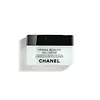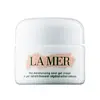What's inside
What's inside
 Key Ingredients
Key Ingredients

 Benefits
Benefits

 Concerns
Concerns

 Ingredients Side-by-side
Ingredients Side-by-side

Water
Skin ConditioningGlycerin
HumectantAlcohol
AntimicrobialHydrogenated Polyisobutene
EmollientDiglycerin
HumectantC13-16 Isoparaffin
SolventAmmonium Acryloyldimethyltaurate/Vp Copolymer
Zingiber Officinale Root Extract
MaskingCamellia Japonica Flower Extract
EmollientSilica
AbrasiveSodium PCA
HumectantParfum
MaskingArginine
MaskingChlorphenesin
Antimicrobial1,2-Hexanediol
Skin ConditioningCaprylyl Glycol
EmollientSodium Acrylates/C10-30 Alkyl Acrylate Crosspolymer
Polyglycerin-3
HumectantSodium Carbomer
Emulsion StabilisingPEG-12
HumectantSodium Hyaluronate
HumectantPhytic Acid
Sodium Citrate
BufferingSodium Benzoate
MaskingTocopherol
AntioxidantWater, Glycerin, Alcohol, Hydrogenated Polyisobutene, Diglycerin, C13-16 Isoparaffin, Ammonium Acryloyldimethyltaurate/Vp Copolymer, Zingiber Officinale Root Extract, Camellia Japonica Flower Extract, Silica, Sodium PCA, Parfum, Arginine, Chlorphenesin, 1,2-Hexanediol, Caprylyl Glycol, Sodium Acrylates/C10-30 Alkyl Acrylate Crosspolymer, Polyglycerin-3, Sodium Carbomer, PEG-12, Sodium Hyaluronate, Phytic Acid, Sodium Citrate, Sodium Benzoate, Tocopherol
Water
Skin ConditioningCyclopentasiloxane
EmollientAlgae Extract
EmollientGlycerin
HumectantCyclohexasiloxane
EmollientButylene Glycol
HumectantDimethicone
EmollientAmmonium Acryloyldimethyltaurate/Vp Copolymer
Citrus Aurantifolia Peel Extract
CleansingOctyldodecyl Stearoyl Stearate
EmollientLimnanthes Alba Seed Oil
Skin ConditioningSesamum Indicum Seed Oil
EmollientMedicago Sativa Seed Powder
Skin ConditioningHelianthus Annuus Seedcake
AbrasivePrunus Amygdalus Dulcis Seed Meal
AbrasiveEucalyptus Globulus Leaf Oil
PerfumingSodium Gluconate
Skin ConditioningCopper Gluconate
Skin ConditioningCalcium Gluconate
HumectantMagnesium Gluconate
Skin ConditioningZinc Gluconate
Skin ConditioningTocopheryl Succinate
AntioxidantNiacin
SmoothingSesamum Indicum Seed Powder
Skin ConditioningHypnea Musciformis Extract
Skin ProtectingSigesbeckia Orientalis Extract
Skin ConditioningAcetyl Hexapeptide-8
HumectantSorbitol
HumectantPalmitoyl Hexapeptide-12
Skin ConditioningGelidiella Acerosa Extract
Skin ProtectingChondrus Crispus Extract
Skin ConditioningNiacinamide
SmoothingSucrose
HumectantLaminaria Digitata Extract
Skin ProtectingPEG-8
HumectantSodium Hyaluronate
HumectantSqualane
EmollientTrehalose
HumectantSaccharide Isomerate
HumectantOleth-10
EmulsifyingTocopheryl Acetate
AntioxidantCaffeine
Skin ConditioningGlyceryl Polymethacrylate
Alcohol Denat.
AntimicrobialHydrogenated Lecithin
EmulsifyingParfum
MaskingDisodium EDTA
BHT
AntioxidantLinalool
PerfumingHydroxycitronellal
PerfumingCitronellol
PerfumingGeraniol
PerfumingLimonene
PerfumingPotassium Sorbate
PreservativePhenoxyethanol
PreservativeWater, Cyclopentasiloxane, Algae Extract, Glycerin, Cyclohexasiloxane, Butylene Glycol, Dimethicone, Ammonium Acryloyldimethyltaurate/Vp Copolymer, Citrus Aurantifolia Peel Extract, Octyldodecyl Stearoyl Stearate, Limnanthes Alba Seed Oil, Sesamum Indicum Seed Oil, Medicago Sativa Seed Powder, Helianthus Annuus Seedcake, Prunus Amygdalus Dulcis Seed Meal, Eucalyptus Globulus Leaf Oil, Sodium Gluconate, Copper Gluconate, Calcium Gluconate, Magnesium Gluconate, Zinc Gluconate, Tocopheryl Succinate, Niacin, Sesamum Indicum Seed Powder, Hypnea Musciformis Extract, Sigesbeckia Orientalis Extract, Acetyl Hexapeptide-8, Sorbitol, Palmitoyl Hexapeptide-12, Gelidiella Acerosa Extract, Chondrus Crispus Extract, Niacinamide, Sucrose, Laminaria Digitata Extract, PEG-8, Sodium Hyaluronate, Squalane, Trehalose, Saccharide Isomerate, Oleth-10, Tocopheryl Acetate, Caffeine, Glyceryl Polymethacrylate, Alcohol Denat., Hydrogenated Lecithin, Parfum, Disodium EDTA, BHT, Linalool, Hydroxycitronellal, Citronellol, Geraniol, Limonene, Potassium Sorbate, Phenoxyethanol
Ingredients Explained
These ingredients are found in both products.
Ingredients higher up in an ingredient list are typically present in a larger amount.
Ammonium Acryloyldimethyltaurate/Vp Copolymer (let's call it AAVC for short) is a synthetically created polymer. It's used as a film-forming agent and used to thicken the consistency of products.
AAVC is able to increase the consistency and viscosity of products due to its large molecule size. It also prevents ingredients from separating.
Glycerin is already naturally found in your skin. It helps moisturize and protect your skin.
A study from 2016 found glycerin to be more effective as a humectant than AHAs and hyaluronic acid.
As a humectant, it helps the skin stay hydrated by pulling moisture to your skin. The low molecular weight of glycerin allows it to pull moisture into the deeper layers of your skin.
Hydrated skin improves your skin barrier; Your skin barrier helps protect against irritants and bacteria.
Glycerin has also been found to have antimicrobial and antiviral properties. Due to these properties, glycerin is often used in wound and burn treatments.
In cosmetics, glycerin is usually derived from plants such as soybean or palm. However, it can also be sourced from animals, such as tallow or animal fat.
This ingredient is organic, colorless, odorless, and non-toxic.
Glycerin is the name for this ingredient in American English. British English uses Glycerol/Glycerine.
Learn more about GlycerinParfum is a catch-all term for an ingredient or more that is used to give a scent to products.
Also called "fragrance", this ingredient can be a blend of hundreds of chemicals or plant oils. This means every product with "fragrance" or "parfum" in the ingredients list is a different mixture.
For instance, Habanolide is a proprietary trade name for a specific aroma chemical. When used as a fragrance ingredient in cosmetics, most aroma chemicals fall under the broad labeling category of “FRAGRANCE” or “PARFUM” according to EU and US regulations.
The term 'parfum' or 'fragrance' is not regulated in many countries. In many cases, it is up to the brand to define this term.
For instance, many brands choose to label themselves as "fragrance-free" because they are not using synthetic fragrances. However, their products may still contain ingredients such as essential oils that are considered a fragrance by INCI standards.
One example is Calendula flower extract. Calendula is an essential oil that still imparts a scent or 'fragrance'.
Depending on the blend, the ingredients in the mixture can cause allergies and sensitivities on the skin. Some ingredients that are known EU allergens include linalool and citronellol.
Parfum can also be used to mask or cover an unpleasant scent.
The bottom line is: not all fragrances/parfum/ingredients are created equally. If you are worried about fragrances, we recommend taking a closer look at an ingredient. And of course, we always recommend speaking with a professional.
Learn more about ParfumSodium Hyaluronate is hyaluronic acid's salt form. It is commonly derived from the sodium salt of hyaluronic acid.
Like hyaluronic acid, it is great at holding water and acts as a humectant. This makes it a great skin hydrating ingredient.
Sodium Hyaluronate is naturally occurring in our bodies and is mostly found in eye fluid and joints.
These are some other common types of Hyaluronic Acid:
Learn more about Sodium HyaluronateWater. It's the most common cosmetic ingredient of all. You'll usually see it at the top of ingredient lists, meaning that it makes up the largest part of the product.
So why is it so popular? Water most often acts as a solvent - this means that it helps dissolve other ingredients into the formulation.
You'll also recognize water as that liquid we all need to stay alive. If you see this, drink a glass of water. Stay hydrated!
Learn more about Water